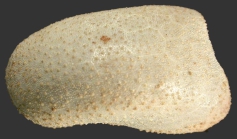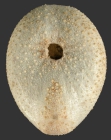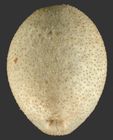Echinoidea taxon details
Plexechinus hirsutus Mortensen, 1905
124351 (urn:lsid:marinespecies.org:taxname:124351)
accepted
Species
marine, brackish, fresh, terrestrial
recent only
Mortensen, T. 1905. Some new species of Echinoidea. Videnskabelige Meddelelser fra den naturhistoriske Forening i Kjøbenhavn, Series 6 7, 241-243.
page(s): 242 [details]
page(s): 242 [details]
Note Northern Atlantic; Denmark Strait. c. 450-1300...
From editor or global species database
Type locality Northern Atlantic; Denmark Strait. c. 450-1300 fathoms. (‘Ingolf '-Expedition.) [details]
Kroh, A.; Mooi, R. (2025). World Echinoidea Database. Plexechinus hirsutus Mortensen, 1905. Accessed at: https://marinespecies.org/Echinoidea/aphia.php?p=taxdetails&id=124351 on 2025-05-13
original description
Mortensen, T. 1905. Some new species of Echinoidea. Videnskabelige Meddelelser fra den naturhistoriske Forening i Kjøbenhavn, Series 6 7, 241-243.
page(s): 242 [details]
context source (Deepsea) Mironov A.N. (2014). Deep-sea fauna of European seas: An annotated species check-list of benthic invertebrates living deeper than 2000 m in the seas bordering Europe. Echinoidea. <i>Invertebrate Zoology</i>. Vol.11. No.1: 120–129 [in English]., available online at http://www.nature.air.ru/invertebrates/v11n1/invert11_1_120_129_Echinoidea.pdf [details] Available for editors
basis of record Hansson, H.G. (2001). Echinodermata, <B><I>in</I></B>: Costello, M.J. <i>et al.</i> (Ed.) (2001). <i>European register of marine species: a check-list of the marine species in Europe and a bibliography of guides to their identification. Collection Patrimoines Naturels,</i>. 50: pp. 336-351. (look up in IMIS) [details]
additional source Mortensen, T. (1950). A Monograph of the Echinoidea. V, 1. Spatangoida I. Protosternata, Meridosternata, Amphisternata I. Palæopneustidæ, Palæostomatidæ, Aëropsidæ, Toxasteridæ, Micrasteridæ, Hemiasteridæ, 432 pp., C. A. Reitzel, Copenhagen.
page(s): 120 [details]
status source Mooi, R. & David, B. 1996. Phylogenetic analysis of extreme morphologies: deep-sea holasteroid echinoids. Journal of Natural History 30, 913-953., available online at https://doi.org/10.1080/00222939600770501
page(s): 947 [details] Available for editors
page(s): 242 [details]
context source (Deepsea) Mironov A.N. (2014). Deep-sea fauna of European seas: An annotated species check-list of benthic invertebrates living deeper than 2000 m in the seas bordering Europe. Echinoidea. <i>Invertebrate Zoology</i>. Vol.11. No.1: 120–129 [in English]., available online at http://www.nature.air.ru/invertebrates/v11n1/invert11_1_120_129_Echinoidea.pdf [details] Available for editors
basis of record Hansson, H.G. (2001). Echinodermata, <B><I>in</I></B>: Costello, M.J. <i>et al.</i> (Ed.) (2001). <i>European register of marine species: a check-list of the marine species in Europe and a bibliography of guides to their identification. Collection Patrimoines Naturels,</i>. 50: pp. 336-351. (look up in IMIS) [details]
additional source Mortensen, T. (1950). A Monograph of the Echinoidea. V, 1. Spatangoida I. Protosternata, Meridosternata, Amphisternata I. Palæopneustidæ, Palæostomatidæ, Aëropsidæ, Toxasteridæ, Micrasteridæ, Hemiasteridæ, 432 pp., C. A. Reitzel, Copenhagen.
page(s): 120 [details]
status source Mooi, R. & David, B. 1996. Phylogenetic analysis of extreme morphologies: deep-sea holasteroid echinoids. Journal of Natural History 30, 913-953., available online at https://doi.org/10.1080/00222939600770501
page(s): 947 [details] Available for editors
 Present
Present  Inaccurate
Inaccurate  Introduced: alien
Introduced: alien  Containing type locality
Containing type locality
From editor or global species database
Original description Closely related to the Pacific species, P. cinctus A. Ag., from which it is, however, easily distinguished by the shape of the test, the actinal keel being much larger and the anal snout much less prominent than in that species. The labrum is, generally, not separated from the second plate of the posterior interradium. Otherwise it agrees with P. cinctus in the structure of the test. Spines slender, very numerous. [details]Type locality Northern Atlantic; Denmark Strait. c. 450-1300 fathoms. (‘Ingolf '-Expedition.) [details]



